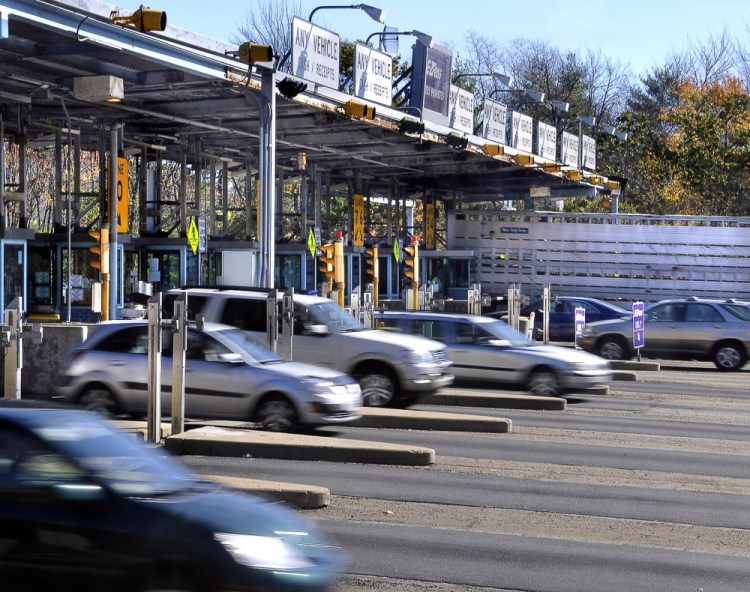The Maine Turnpike Authority is moving forward on a controversial plan to build a high-speed toll plaza 1.5 miles north of the existing York plaza rather than at the site preferred by the town of York.
The toll road’s board of directors Thursday voted unanimously to instruct staff to seek permits to build the plaza at mile marker 8.8. Construction could start in the spring of 2017 if the permits are awarded.
Although expected, the board’s decision sparked outrage by opponents of the plan who have been battling the relocation for years.
“This is an unbelievably expensive project that will absolutely destroy people’s lives and the environment,” said Joan Jarvis, a York resident who is among the leaders of an opposition group called Think Again.
The turnpike authority’s staff had recommended the site, as did a consultant, who told the authority it would save $20 million if it built the plaza at Mile 8.8 on the turnpike rather than at Mile 7.3, a site 400 feet north of the existing plaza. The town of York and Think Again, a collection of concerned residents, prefer having the new toll plaza built at Mile 7.3.
There are 90 homes within 2,600 feet of the mile 8.8 site that will be affected by increased light pollution and the noise of trucks braking and accelerating if the toll plaza is built there, Jarvis said. She said there are far fewer homes within the same distance at mile 7.3.
Peter Mills, executive director of the turnpike authority, said nearly all of the homes cited by Jarvis are so far away they won’t be affected at all by the project. He said there are only four houses within 1,000 feet of the mile 8.8 site, compared to 47 houses at the mile 7.3 site.
Jacobs Engineering Group, a global engineering firm based in California, said it would cost $60 million to build the plaza at mile 7.3 because a significant portion of the site is wetlands. It said it would cost $40 million to build at mile 8.8 because the site has better soil for construction. The report also said mile 8.8 would be a safer location because it is on a straight section of the highway and on the crest of a hill, which would provide good visibility for approaching vehicles. The mile 7.3 location, on the other hand, is on a curve, the report said.
Because the toll plaza would be atop a hill, cars and trucks won’t have to use their brakes as much to slow down, Mills said.
The turnpike authority wants to replace the York toll plaza, which collects $56 million in toll revenue per year, because it’s sinking into clay soils at its existing location and a tunnel full of electrical components leaks. The new toll plaza would be designed to allow motorists to pay cash at booths or to pay electronically with their E-ZPass by using highway-speed center lanes, such as those on Interstate 95 in Hampton, New Hampshire.
That design is also coming under fire by opponents, who argue that building a cash-oriented toll plaza is a waste of money because they will be obsolete in a few years. Other states, such as Florida, have found they can collect tolls more safely using all-electronic tolling, Jarvis said. In all-electronic tolling, which is also used on the Golden Gate Bridge, if vehicles don’t have an E-ZPass, cameras capture an image of the license plate and the vehicle’s owner is sent a bill.
According to the plan approved by the board of directors Thursday, the existing turnpike lanes will be used for high-speed toll lanes. Five lanes would be added at the southbound side of the plaza and four to the northbound side for cash toll booths.
The turnpike authority will need two permits, one from the Army Corps of Engineers because about one acre of wetlands will be disturbed. It also needs a Natural Resources Protection Act permit from the Maine Department of Environmental Protection.
Send questions/comments to the editors.



Success. Please wait for the page to reload. If the page does not reload within 5 seconds, please refresh the page.
Enter your email and password to access comments.
Hi, to comment on stories you must . This profile is in addition to your subscription and website login.
Already have a commenting profile? .
Invalid username/password.
Please check your email to confirm and complete your registration.
Only subscribers are eligible to post comments. Please subscribe or login first for digital access. Here’s why.
Use the form below to reset your password. When you've submitted your account email, we will send an email with a reset code.